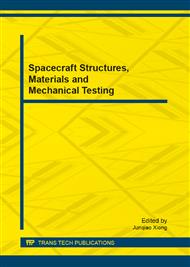p.91
p.97
p.107
p.115
p.121
p.127
p.133
p.139
p.143
Damage Signal Decomposition of Lamb Wave Based on Similarity in SHM
Abstract:
Rapid detecting structural damage by lamb wave is an emerging technology in the field of structural health monitoring, and damage signal decomposition of Lamb wave, with the intent of obtaining reflection signal from damage, is the key point of detecting damage by Lamb wave. Therefore, this paper proposes a new algorithm for damage signal decomposition--similarity-based algorithm. In order to obtain reflection signal form damage, it simulates the reflection signals from damage and boundary with the waveform after the input signal has propagated a distance, and then optimizes the various parameters of the synthetic signal, which consists of reflection signals from damage and boundary, by genetic algorithm based on similarity so that the similarity between the synthetic signal and the damage signal reaches the maximum. Finally, simulation results showed the feasibility and accuracy of the algorithm proposed in this paper.
Info:
Periodical:
Pages:
121-126
Citation:
Online since:
February 2013
Authors:
Price:
Сopyright:
© 2013 Trans Tech Publications Ltd. All Rights Reserved
Share:
Citation:


